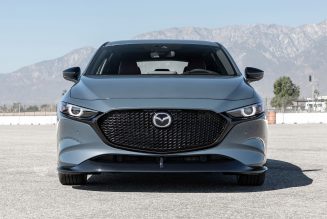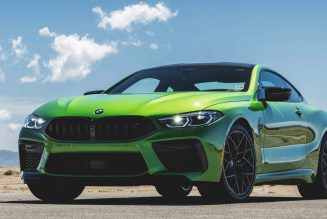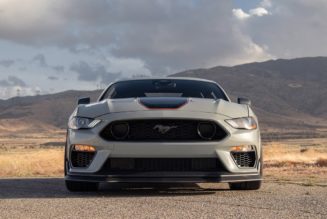The age of truly bad cars is now a distant speck in our rear-view mirrors. With few exceptions, you’d be hard-pressed to find a new car that’s dangerously slow, prone to flipping, eager to spin, or waiting to catch fire. Even a vehicle we rank among the worst in a given segment is a perfectly serviceable transportation machine. Such is the case with the 2021 Nissan Altima, which lurks near the middle of our midsize sedan rankings but is hardly “bad.”
Wait, What’s a VC-Turbo?
The Altima’s greatest strength lies under its hood. Our test vehicle is fitted with the more powerful of two engine options—a 2.0-liter turbo-four developing 236 hp and 267 lb-ft of torque. Nissan labels the lump VC-Turbo for its novel variable compression ratio that promises the performance of a V-6 at low compression with the efficiency of a diesel-sipping four-cylinder at high compression.
Acceleration numbers read 0-60 in 5.8 seconds and the quarter mile in 14.3 at 99.0 mph. Compared to other upgrade-engine midsize sedans, the VC-Turbo Altima is quicker than the turbocharged Mazda 6 Grand Touring and Subaru Legacy XT; tied at 60 but quicker and slower in the quarter next to the V-6 Toyota Camry; and a few tenths behind the (also turbocharged) Honda Accord 2.0T, Hyundai Sonata N-Line, and Kia K5 GT. The Altima’s 26.5-second figure-eight lap is respectably upper mid-pack, too, and our testing driver was impressed with its “amazingly quick” turn-in and confident grip.
The industry-exclusive (well, exclusive to Nissan and its Infiniti luxury division) VC-Turbo tech is most apparent when you look at EPA fuel economy figures. At 25/34 mpg city/highway, the Altima delivers the highest city and highway mileage of any comparable sedan. Its closest competitor is the Hyundai Sonata N-Line, which is rated at 23/33 mpg.
Driving Impressions
For those who want an idea of what’s going on in the Altima’s clever powerplant, my favorite detail is a page in the 7.0-inch instrument cluster display with a digital boost gauge (which earns extra points for displaying positive boost and negative vacuum pressure) and a graphic illustrating how the compression ratio changes for performance or fuel economy. Unfortunately, the display is entirely illegible in direct sunlight, and the underhood actions it highlights leave something to be desired.
This Nissan feels as quick on the road as it does out on the test track—there’s more than enough torque to push you back in the seat—but the continuously variable automatic transmission (CVT) it’s bolted to and the overall tuning ruin the experience. Power delivery is anything but linear; the same input to the gas pedal can result in any number of surging responses from the powertrain.
There’s noticeable lag as the car’s computers determine the ideal throttle opening, compression ratio, boost level, and transmission ratio for the task at hand, and the driving experience suffers for it. In this segment, tuning and response matter more than outright performance, and Nissan dropped the ball; we’ve noted similar rubber-band-like effects from the same engine in the Infiniti QX50 SUV.
The styling, at least, is relatively successful. Nissan’s Scarlet Ember Tintcoat ($395 fancy red) paint rivals Mazda’s Soul Red for depth and luster. This is one of the better executions of Nissan’s “V-Motion” front grille, too, and the squared-off rear end, optional $420 rear spoiler, and 19-inch wheels deliver a nearly convincing sport sedan aesthetic. A note on those wheels, though: Take note of what sort of roads you frequent before ordering them.
The Altima rides poorly. Sharper impacts send shudders resonating through the body structure and this suspension system finds lumps and bumps in a road that are imperceptible to a Honda Accord. That’s due in part to the big wheels and short-sidewall tires, which also likely contributed to the flat we experienced midway through our loan. The Altima SV rocks more forgiving 17s.
Interior Qualms
Inside, this author immediately noticed the elevated seating position. At 6-foot-1, my head was almost on the ceiling, but some drivers will tolerate the feeling of sitting on top of the car (rather than down in it) in exchange for slightly improved visibility. The seats are nicely padded but lacking in thigh support and lateral bolstering.
Other observations? The flat-bottom three-spoke steering wheel looks sporty and handsome. We dig the SR-specific floor mats. Apple CarPlay works just fine and the infotainment display is large and responsive enough, even if newer competitors have more to offer. Curiously, our Altima lacked dual-zone or even single-zone automatic climate control—a strange omission in the near-$33,000 sedan. Worse still, Nissan’s ProPilot Assist adaptive cruise control and lane keep assist system is not included or even available on the Altima SR. (For context, that feature content is standard on all trims of the Honda Accord, Toyota Camry, Subaru Legacy, Hyundai Sonata, and Mazda 6 to name a few.) Nissan claims sport-minded buyers who go for the SR don’t see as much value in semi-autonomous driver-assist tech.
To be fair, Nissan includes automatic emergency braking front and rear, blind-spot monitoring, rear cross-traffic alert, and automatic high beams on the SR, all of which work as advertised. Lacking options for the two most significant driver-assist features just reinforces the feeling that the Altima SR is decidedly behind its competition.
In Conclusion …
We’ve passed the age of bad car, and the Altima is not that. Its clever engine tech succeeds in providing stellar performance alongside segment-best fuel economy. Despite not including the driver-assist active safety tech we’ve come to expect in the segment, the Altima is still a safe vehicle; it even earns a 2021 IIHS Top Safety Pick+. It rides too stiff and the powertrain tuning needs improvement, but it’ll get you around just fine.
So of course the Altima isn’t a bad car, it’s not even close. What’s frustrating is that Nissan’s more recent efforts—the new Sentra and redesigned Rogue come to mind—prove the automaker is capable of building genuinely competitive offerings. Those cars give us hope for the Altima’s future. As it sits, though, Nissan’s midsize sedan stays where we’ve ranked it: Midpack.
| 2021 Nissan Altima SR VC-Turbo | |
| BASE PRICE | $31,575 |
| PRICE AS TESTED | $32,905 |
| VEHICLE LAYOUT | Front-engine, FWD, 5-pass, 4-door sedan |
| ENGINE | 2.0L/236-hp/267-lb-ft* turbo DOHC 16-valve I-4 |
| TRANSMISSION | Cont variable auto |
| CURB WEIGHT (F/R DIST) | 3,416 lb (61/39%) |
| WHEELBASE | 111.2 in |
| LENGTH x WIDTH x HEIGHT | 192.9 x 72.9 x 56.8 in |
| 0-60 MPH | 5.8 sec |
| QUARTER MILE | 14.3 sec @ 99.0 mph |
| BRAKING, 60-0 MPH | 115 ft |
| LATERAL ACCELERATION | 0.90 g (avg) |
| MT FIGURE EIGHT | 26.5 sec @ 0.67 g (avg) |
| EPA CITY/HWY/COMB FUEL ECON | 25/34/29 mpg |
| ENERGY CONS, CITY/HWY | 135/99 kWh/100 miles |
| CO2 EMISSIONS, COMB | 0.68 lb/mile |
| *Regular fuel ratings; 93 octane raises Nissan to 248 hp @ 5,600 rpm and 273 lb-ft @ 4,000 rpm | |







